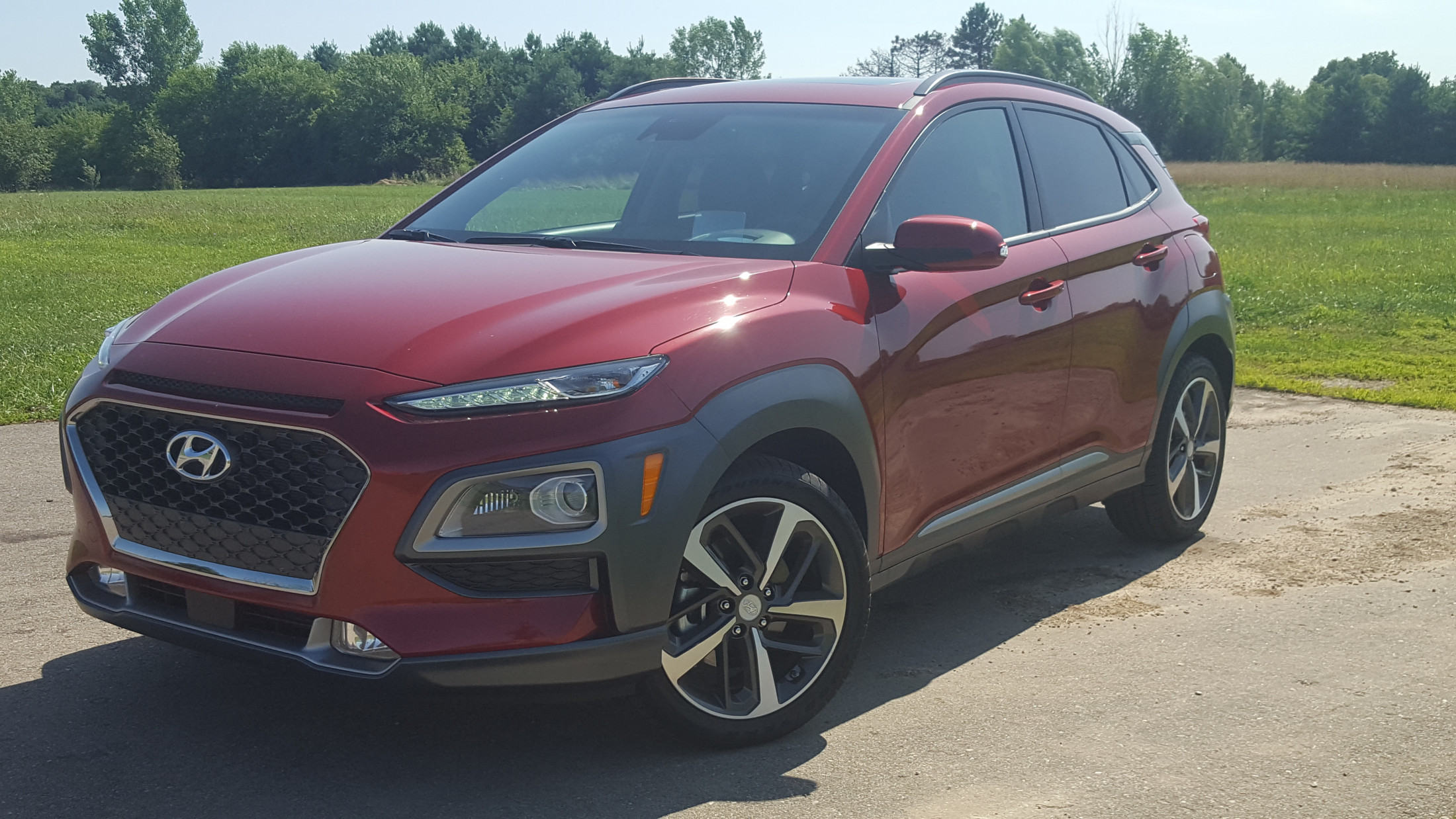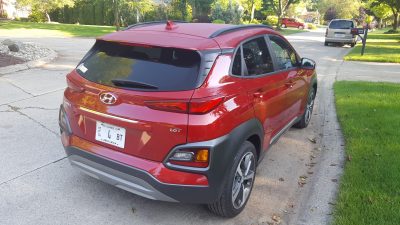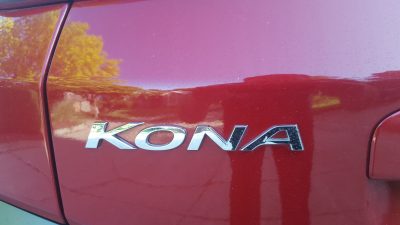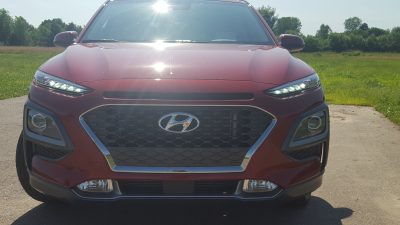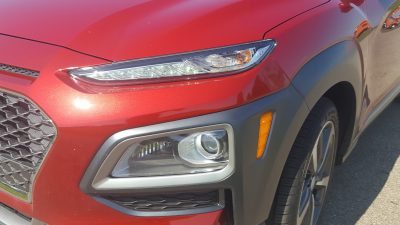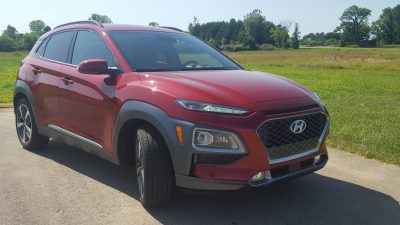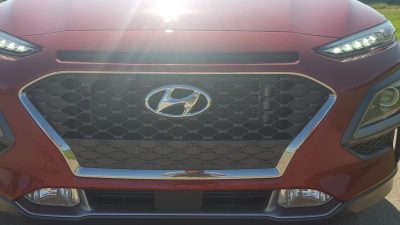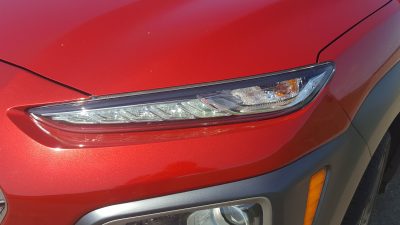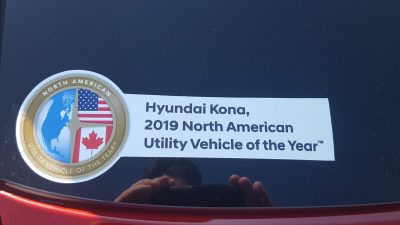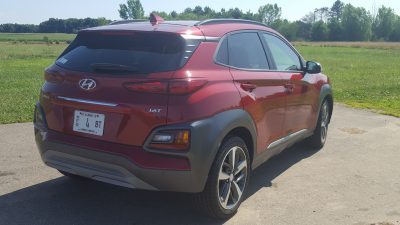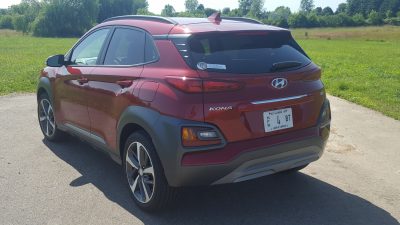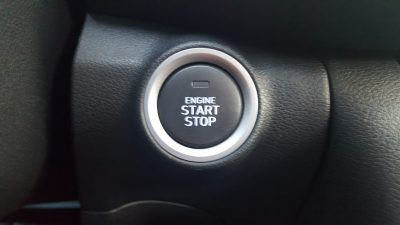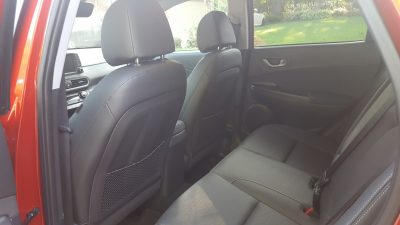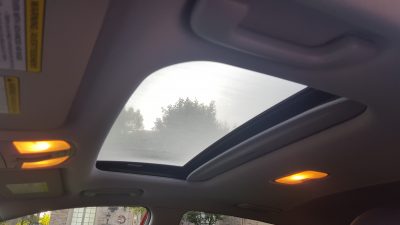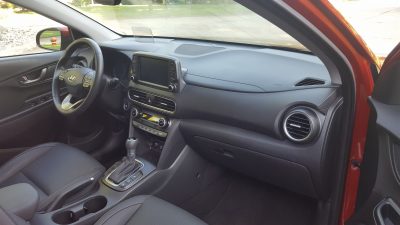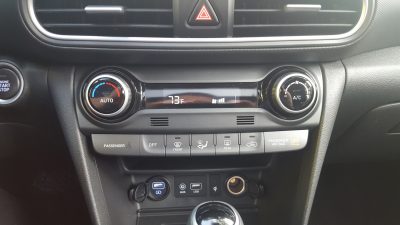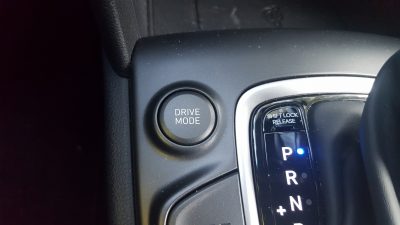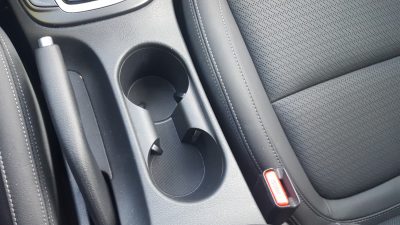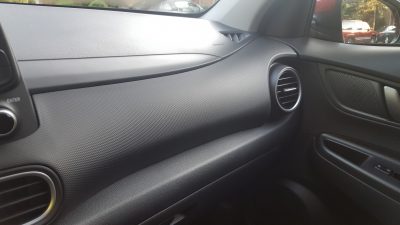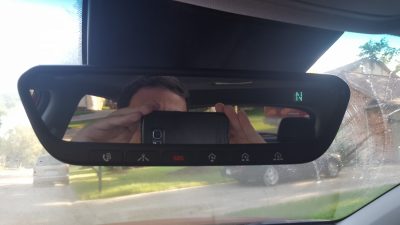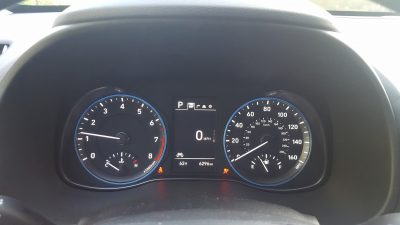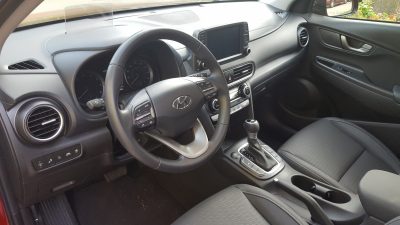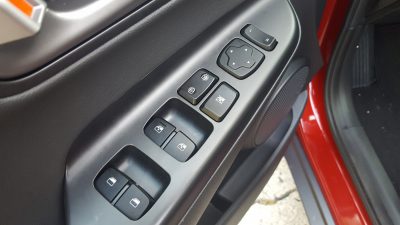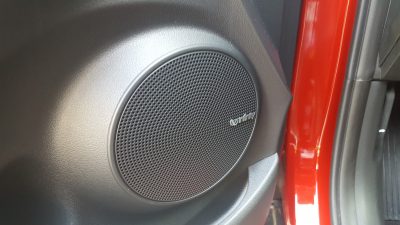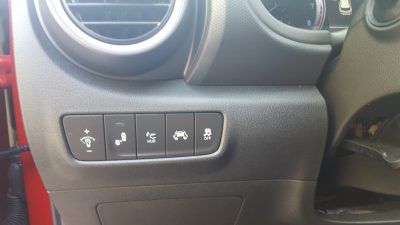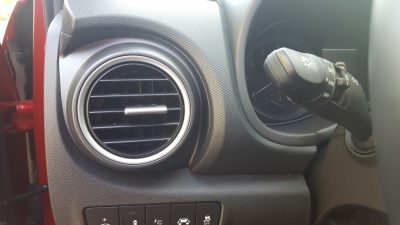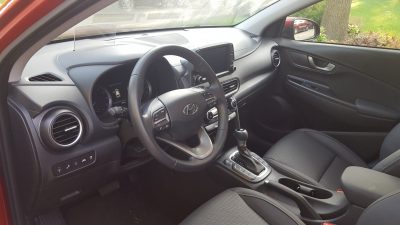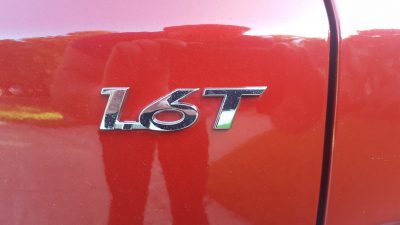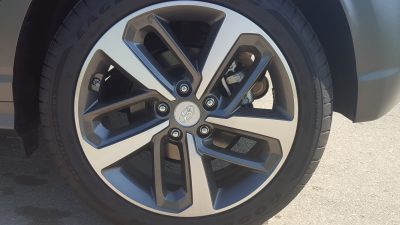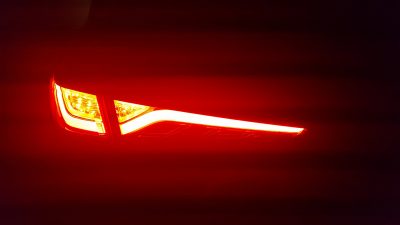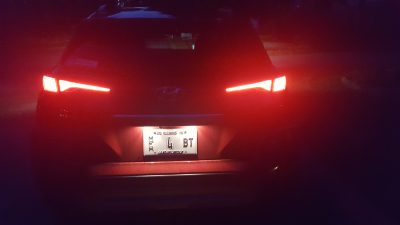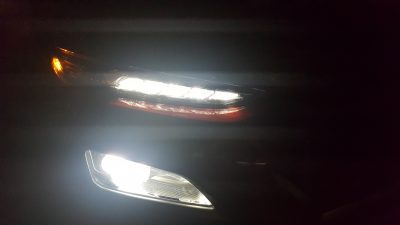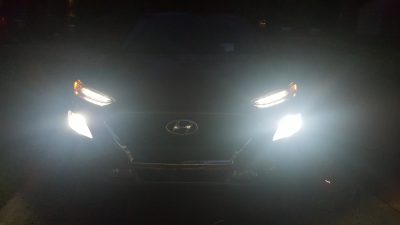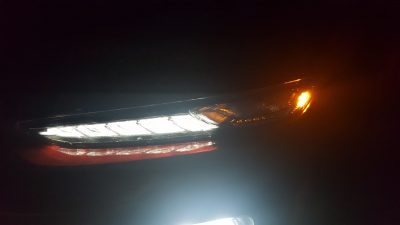When we last met the Hyundai Kona, it was in Detroit where we got to briefly experience its charms on various roads in the Metro Detroit area (as well as run into Jeremy Clarkson, James May, and Richard Hammond of Top Gear and Grand Tour fame). Our brush with the stars aside, the Kona delivered a good first impression, thanks to its compact size, as well as the sheer amount of standard equipment that is infused into every Kona. The Kona even took its act to the green car market, where the Kona EV has been making waves since it arrived in the U.S. marketplace (we even had a chance to sample it ourselves here). But can the Kona continue its winning ways and be a good long term vehicle purchase? Or is the Kona outgunned in the exploding compact CUV market?
Accomplished Student And Proud Of It:
To find out, we had the chance to spend a full week with the Kona to see if its reputation held up when subjected to real world situations. When we first met it, we were immediately entranced by its bold and uniquely distinctive design cues. Hyundai calls it the “Urban Smart Armor” look, and while it does sound very tactical. The look is still solid after long term exposure, and we will give Hyundai designers credit for creating a unique canvas that allows the Kona to exude its full personality. That said, the look is also very busy, with a lot of intakes and vents. For example the horizontal intake above the main grille looks functional, but is actually a faux piece that is all show and no sizzle. the plastic look body cladding helps add some welcome contrast to the Kona’s motif, but since they are painted on versus being formal dark plastic units, they will garner scrapes like the rest of the painted surfaces.
If asked what the Kona is trying to emulate, it can be described that the Kona is a mishmash of cues that we have seen in other compact CUVs. For example the ultra low rear overhang of the Subaru Crosstrek, the separated low and high beam headlights from the Nissan Juke, as well as other select traits from many of today’s CUVs. its an interesting petri dish of material, but ultimately the Kona has just enough of its own inner personality to rise above its source material. Hyundai was also keen on highlighting the Kona’s NACOTY victory back in January, and like a proud parent hanging a kids drawing on the refrigerator, company reps posted a small sticker of its achievement on the back window, which thankfully did not hinder rear visibility, and also advertised its accolades.
High Quality Interior Embraces Technology:
While the exterior styling embraces its attempts at being unique, the interior of the Kona is executed in typical Korean fashion, with high quality materials and a very sensible design theme throughout. The UVO infotainment system in our Ultimate grade tester featured an 8.0 inch touchscreen and had high quality graphics which meshed well with just how intuitive it is to use on the move. When equipped in Limited and Ultimate guises, the Kona doubles down, and plays a solid bluff play to fool competitors thinking it has less technology than it really does. In fact, Hyundai engineers wanted the Kona to deliver something extra to its buyers, and have done it in a multitude of ways. This includes leather seats that are perhaps one of the few in the segment that actually provides a legitimate balance between long term comfort, as well as just enough support to help them hold you in place when you whip the Kona down a twisty back road. Also, the Kona is one of an elite few to offer a full color heads up display system, though a tradeoff is that buyers have to look at a small plastic window to read various information versus having it formally projected onto the windshield.
The goodness continues to make itself known when you look at other aspects of the Kona’s technology arsenal. Ultimate models gain a nifty 4.2 inch color display between the gauges, wireless smartphone charging, and a potent eight speaker Infinity premium audio system. Android Auto and Apple CarPlay capability are also standard. The Ford Ecosport doesn’t even come close to matching the Kona in this category, and very few rivals can match the Ultimate trim perfectly with their range topping CUVs. With that said, two key flaws also make their presence felt when you go beyond the gadgets, and unfortunately they plague the core aspects of what the Kona should be accomplishing. For instance, cargo capacity is at the bottom of the segment with 19.2 cubic feet of space with the seats in place, but folding them down only increases it to 45.8 cubic feet. When compared to rivals like the Honda HR-V which offers 23.2 and 55.9 cubic feet of space respectively, the Kona is behind the curve here. As expected, the boxier Kia Soul tops them all in this category, with 61.3 cubic feet of space on hand. Meanwhile, rear seat space still remains cramped with tight legroom for those that are taller than 6 feet, but the space could appeal to small children on short to intermediate jaunts.
Sensible Performance:
Buyers looking to add the Hyundai Kona to their garage will have two engines to choose from. A naturally aspirated 2.0 liter four cylinder powers lower grade Konas, but for those that have read our prior reviews where we torched this engine, or require more power in their daily commute, look no further than the uplevel 1.6 liter turbocharged four cylinder. While this particular engine does force you to make the leap into either the Limited or Ultimate grade models like our tester, we think in this instance, it is well worth the trouble. With 175 horsepower and 195 lb-ft of torque, the engine helps make the Kona feel confident and reasonably quick, though we hope that the 1.6 liter from the Kia Soul GT will eventually find its way into the Kona (perhaps as an N-Line model) to allow it to be legitimately fast, while also blunting the effects of its 3,062 lb curb weight better. Still, for what it is, the 1.6 liter is more potent than rivals such as the Ford Ecosport, Jeep Renegade, and the Nissan Kicks which should help the Kona win in a straight line race.
Handling in our tester was commendable in sport mode, but left to its own devices in default mode, and the Kona quickly transforms into an offering that features plenty of bodyroll, and the cushy suspension lacks both firmness and control (sport mode fixes the former). We got to experience this on a brief jaunt up to Gingerman raceway for the annual one day track school held by the Midwest Automotive Media Association (MAMA) where some of the divots and uneven roads that dotted our route to the track highlighted just how unsure and unbalanced the suspension felt. We elected to spend the bulk of our time in sport mode, and reserved the default setting to neighborhood driving.
But the biggest gripe we had with our tester was its seven-speed dual-clutch automatic. Unlike some of the other gearboxes that we have sampled in other Hyundai/Kia products, this one lacks refinement, especially when pulling away from a stop, or even shifting from reverse into drive. When in one of these situations, an unusual jerk or twitch would occur, which had us wondering if there was something wrong with it. We also caught the seven-speed napping on the job occasionally, with noticeable gear hunting before it finally found the right gear to match the engine’s sweet spot. While the average consumer will tolerate many of these faults, more discerning drivers may find them annoying to live with in the long term ownership experience. Thankfully, braking will always be a highlight thanks to how stable the Kona is in hard stops, with acceptable amounts of nose dive present.
Value Quotient:
Pricing for the 2019 Hyundai Kona starts at $18,990 which is among the cheapest in the segment. Only the $18,640 Nissan Kicks, and the $17,490 Kia Soul have lower base MSRPs. This price gets you into the base SE which focuses on providing the essentials and not much else. Climbing in to the SEL and the SEL Plus ups the equipment, but the 147 horsepower 2.0 liter is standard issue across all three trims. Moving up to the $24,650 Limited grants you access to the 1.6 liter turbo, but also inadvertently showcases just how rigid Hyundai’s packaging ladder is, with even the SEL Plus missing out on the uplevel engine. Hopefully Hyundai will eventually make this an optional upgrade in that trim, since we think it can help lure in a wider swath of customers. But move into Ultimate territory like our tester, and be prepared to see just how much you indeed can spend on the Kona, with our lightly optioned example having a final sticker of $28,680. Adding all-wheel drive to the Ultimate raises the price to $29,995, and a quick search on Google can unearth some examples that crest just over $30,000 before taxes and fees are added to the equation.
This pricing puts this variant of the Kona in an elite club, but lower trims are positioned nicely to fight off challenges from the Chevrolet Trax, Toyota CH-R, Jeep Renegade, Nissan Kicks, and the Fiat 500X. The Mazda CX-3 has a bit more pep in its step when tasked with winding roads, but it has an even worse rear seat, no turbocharged engine, and the sloping rear roofline eats into rear headroom. The Kona also stands out thanks to its diverse arsenal of safety features, and while the SE model does not quote get the full package, SEL and higher trims benefit from goodies such as blind spot monitoring, lane keep assist, automatic emergency braking, and even a rear cross traffic alert system. Ultimate grade Konas up the ante a bit, and add standard LED headlights (also standard on the Limited), automatic high beams, and more parking sensors. This shield of safety is not very common in the compact CUV segment, and the Kona has certainly raised the benchmark for its rivals to match.
With a strong personality, excellent levels of safety, and a no nonsense approach to things, the 2019 Hyundai Kona should still be a very valuable companion to young buyers. While it does come with a fair share of quirks, we hope that if Hyundai chooses to smooth some of these out with an infusion of N-Line pixie dust, it will transform into an even more potent disruptor that can truly have a balanced spec sheet of characteristics for even the most eager of drivers.

Carl Malek has been an automotive journalist for over 10 years. First starting out as a freelance photographer before making the transition to writing during college, his work has appeared on numerous automotive forums as well as websites such as Autoshopper.com.
Carl is also a big fan of British vehicles with the bulk of his devotion going to the Morgan Motor Company as well as offerings from Lotus, MG, and Caterham. When he is not writing about automobiles, Carl enjoys spending time with his family and friends in the Metro Detroit area, as well as spending time with his adorable pets.

